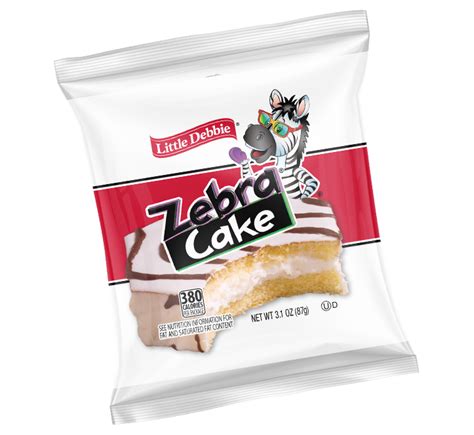
A basset hound named Louie’s hilariously unimpressed reaction to a video of himself playing at dog daycare has gone viral, captivating the internet with his deadpan expression.
Louie, a floppy-eared basset hound, has become an internet sensation after his owner, Michelle Picard, showed him a video of himself frolicking with other dogs at daycare. The video, posted on TikTok, has garnered millions of views, not because of Louie’s playful antics in the daycare footage, but rather due to his utterly indifferent reaction to seeing himself on screen. Instead of excitement or recognition, Louie greeted his on-screen doppelganger with a signature basset hound stare of profound apathy, solidifying his status as a comedic canine.
Picard, speaking to various media outlets, described Louie’s typical demeanor as generally laid-back. “That’s his normal reaction to pretty much everything,” she explained. “He’s very chill. Nothing really excites him.” This inherent calmness, coupled with the juxtaposition of the playful daycare video, is what struck a chord with online viewers. The video begins with Louie lying on the floor, seemingly unbothered by anything. Picard then holds up her phone, displaying the daycare footage. As the video plays, showing Louie bounding around and engaging with other dogs, his real-life counterpart remains completely still, his face a picture of stoic indifference. The comedic timing and contrast between Louie’s actions in the video and his present reaction are undeniable.
The online reaction to Louie’s video has been overwhelmingly positive, with commenters praising his “classic basset hound” attitude. Many have shared similar experiences with their own pets, noting that animals often fail to recognize themselves in mirrors or on screens. Others have simply reveled in the humor of the situation, creating memes and GIFs featuring Louie’s unimpressed expression. The video has also sparked discussions about canine cognition and how dogs perceive themselves and their surroundings. Experts suggest that dogs may not recognize their own reflections in the same way humans do, relying more on scent and sound for identification.
This isn’t the first time an animal’s reaction to technology has gone viral. Similar videos featuring cats, dogs, and other pets reacting to their reflections, television shows, and even video games have consistently captured the internet’s attention. These videos often provide a lighthearted glimpse into the minds of animals, highlighting their unique perspectives and behaviors. In Louie’s case, his indifference has become a symbol of comedic nonchalance, resonating with viewers who appreciate the simple humor of an animal unimpressed by its own antics.
The widespread attention garnered by Louie’s video also underscores the power of social media in creating viral moments. Platforms like TikTok, Instagram, and Twitter allow users to share their everyday experiences with a global audience, transforming ordinary events into viral sensations. In this instance, Picard’s simple act of sharing a video of her dog’s reaction has resulted in widespread recognition and amusement. This virality can have a significant impact, not only in terms of entertainment but also in raising awareness about specific breeds, animal behavior, and the unique bond between humans and their pets.
Furthermore, Louie’s story highlights the individual personalities of dogs, even within the same breed. While basset hounds are generally known for their relaxed and amiable nature, Louie’s particular brand of indifference sets him apart. This emphasizes the importance of understanding and appreciating the unique characteristics of each animal, rather than relying solely on breed stereotypes.
The video has also led to a surge in interest in basset hounds, with many viewers expressing their admiration for the breed’s distinctive appearance and temperament. Basset hounds are known for their long ears, droopy eyes, and short legs, giving them a perpetually mournful expression. However, despite their somewhat melancholic appearance, they are generally good-natured, loyal, and affectionate companions. They are also known for their keen sense of smell, which makes them excellent tracking dogs.
Picard has expressed her gratitude for the positive response to Louie’s video, noting that she simply wanted to share a funny moment with her followers. She also hopes that the video will bring a smile to people’s faces and remind them of the simple joys of pet ownership. The video serves as a reminder that sometimes, the most entertaining moments are the unexpected ones, and that even a seemingly indifferent reaction can capture the hearts of millions.
Beyond the immediate amusement, Louie’s viral moment has a few more layers. First, it speaks to our enduring fascination with animals, particularly their behavior. We constantly seek to understand their motivations and thought processes, often projecting human emotions onto them. Secondly, it highlights the growing trend of pet-related content on social media. Pets have become integral members of many families, and their antics often provide a source of humor and connection for online communities. Lastly, Louie’s story is a testament to the power of the internet to turn ordinary moments into extraordinary ones, connecting people from all over the world through shared laughter and amusement. It’s a reminder of the simple joys in life and the unique bonds we share with our pets.
Louie’s viral video also opened up discussions about canine behavioral patterns and whether dogs truly recognize themselves on screen. Animal behaviorists weighed in, offering insights into how dogs perceive their surroundings. While dogs possess a strong sense of smell for recognition, visual recognition, especially self-recognition, is less defined. This adds a layer of scientific intrigue to Louie’s seemingly simple, unimpressed reaction.
The internet’s love for Louie and his apathetic response underscores a broader trend of appreciating authenticity and imperfection. In a world often saturated with curated content, Louie’s genuine, unscripted reaction is refreshing and relatable. It’s a reminder that sometimes the most entertaining moments are those that are completely unpretentious and natural.
The aftermath of Louie’s viral fame has also brought attention to Michelle Picard’s social media presence, turning her into a content creator focused on pet-related content. She now uses her platform to share more insights into Louie’s life, as well as tips and advice for other pet owners. This highlights the potential for viral moments to transform ordinary individuals into influencers, using their newfound platform to connect with a broader audience and share their passions.
Ultimately, Louie’s viral video is more than just a funny clip of a dog reacting to a video of himself. It’s a reflection of our shared love for animals, our fascination with their behavior, and our appreciation for authenticity and imperfection. It’s a reminder that sometimes the simplest moments can bring the greatest joy, and that even an indifferent basset hound can capture the hearts of millions. The video has also spurred conversations about the digital age and how social media has become a medium for pet owners to share experiences and connect with other animal lovers, fostering communities centered around their pets.
Louie’s viral fame also indirectly benefits animal shelters and rescue organizations, as it raises awareness about the joys of pet ownership and encourages people to consider adopting animals in need. Seeing the bond between Louie and his owner can inspire others to open their homes and hearts to a furry friend, providing them with a loving and supportive environment. This ripple effect demonstrates the potential for viral content to have a positive impact on society, promoting compassion and responsible pet ownership.
The story of Louie the basset hound also serves as an example of how seemingly insignificant events can capture the collective imagination and become a cultural phenomenon. His unimpressed reaction has been interpreted in various ways, from a commentary on the absurdity of modern life to a celebration of individuality and self-acceptance. This demonstrates the power of art and entertainment to spark dialogue and inspire reflection on a wide range of issues.
In conclusion, the tale of Louie the basset hound and his viral video is a multi-layered story that encompasses humor, animal behavior, social media trends, and the power of human connection. It’s a reminder that even the most mundane moments can become extraordinary when shared with the world, and that sometimes the greatest joy can be found in the simplest of things.
Frequently Asked Questions (FAQs)
1. Why did the video of Louie the Basset Hound go viral?
The video went viral primarily due to the contrast between Louie’s playful behavior in the daycare video and his utterly unimpressed reaction while watching it. His stoic and indifferent expression, a characteristic trait of basset hounds, struck a comedic chord with viewers who found the juxtaposition humorous and relatable. As Michelle Picard, Louie’s owner, mentioned, “That’s his normal reaction to pretty much everything,” which made the situation even funnier, given the contrast with his playful video counterpart.
2. What is a Basset Hound’s typical temperament, and how does Louie fit into that description?
Basset hounds are generally known for their relaxed, laid-back, and amiable nature. They are typically good-natured, loyal, and affectionate companions. While Louie embodies the relaxed aspect of the breed, his particularly indifferent reaction to most things sets him apart, adding to his unique appeal. This reinforces that while breeds share common traits, individual personalities can vary greatly.
3. Do dogs recognize themselves in videos or mirrors?
The ability of dogs to recognize themselves in videos or mirrors is a subject of debate and ongoing research. While dogs primarily rely on scent and sound for identification, visual recognition, especially self-recognition, is less clear. Some experts suggest that dogs may not perceive their reflections or on-screen images as representations of themselves, leading to varied reactions. Therefore, Louie’s lack of reaction may be attributed to his failure to recognize himself visually.
4. What impact has the viral video had on Louie and his owner, Michelle Picard?
The viral video has transformed Michelle Picard into a content creator focused on pet-related content. She now shares more insights into Louie’s life, as well as tips and advice for other pet owners. The increased attention has provided her with a platform to connect with a broader audience and share her passion for animals.
5. How does Louie’s story reflect broader trends in social media and our relationship with pets?
Louie’s story reflects several broader trends, including our enduring fascination with animal behavior, the growing popularity of pet-related content on social media, and the appreciation for authenticity and imperfection. Pets have become integral members of many families, and their antics often provide a source of humor and connection for online communities. Louie’s genuine, unscripted reaction is refreshing and relatable, reminding us that sometimes the most entertaining moments are those that are completely natural and unpretentious.
Extended In-Depth Analysis:
The viral sensation of Louie the basset hound and his unimpressed reaction to his daycare video is more than just a fleeting moment of internet amusement; it’s a complex intersection of animal behavior, social media dynamics, and the evolving relationship between humans and their pets.
Canine Cognition and Self-Recognition:
One of the most compelling aspects of this story is the question of whether dogs can recognize themselves in videos or mirrors. This delves into the fascinating field of canine cognition and self-awareness. While humans develop a sense of self-recognition at a young age, the process is different for animals. Dogs primarily rely on their sense of smell for identification. Their olfactory senses are far more developed than their visual abilities, meaning they are more likely to recognize a familiar scent than a visual image.
Studies have shown that dogs can recognize their own scent among others, but visual self-recognition is less common. The mirror test, a standard measure of self-awareness in animals, has yielded mixed results for dogs. Some dogs may react to their reflection as if it were another dog, while others may simply ignore it. This suggests that they may not fully grasp that the image they are seeing is themselves.
In Louie’s case, his lack of reaction to the video may be because he did not visually recognize himself. Instead, he might have perceived the image on the screen as just another dog, or perhaps he simply wasn’t interested. His indifference could also be attributed to his breed-specific traits. Basset hounds are known for their calm and laid-back demeanor, so it’s possible that even if he did recognize himself, he simply wasn’t motivated to react.
Social Media Dynamics and Virality:
The speed and scale at which Louie’s video went viral highlight the power of social media in shaping cultural trends. Platforms like TikTok, Instagram, and Twitter have become ubiquitous in modern society, allowing users to share their experiences with a global audience. This has led to the rise of viral content, where ordinary events can quickly become worldwide sensations.
Several factors contributed to the virality of Louie’s video. First, the comedic timing and contrast between his actions in the daycare footage and his present reaction were undeniable. The juxtaposition of his playful behavior and his stoic indifference created a moment of unexpected humor that resonated with viewers. Second, the video was easily shareable, making it ideal for social media platforms. It was short, visually appealing, and required no prior knowledge or context. Third, the video tapped into a shared human experience: our love for animals. People are drawn to content that features pets, especially when it showcases their unique personalities and quirks.
The viral nature of Louie’s video also demonstrates the role of algorithms in shaping our online experiences. Social media platforms use algorithms to determine which content is shown to which users. These algorithms take into account a variety of factors, including user preferences, engagement rates, and the content’s relevance. When a video starts to gain traction, the algorithm is more likely to promote it to a wider audience, creating a snowball effect that can lead to viral fame.
Human-Animal Bond and Pet Culture:
Louie’s story also reflects the evolving relationship between humans and their pets. In modern society, pets are increasingly viewed as integral members of the family. They provide companionship, emotional support, and unconditional love. This has led to the growth of a thriving pet culture, where owners are willing to spend significant amounts of time and money on their furry friends.
Social media has played a key role in shaping this pet culture. Platforms like Instagram and TikTok are filled with content featuring pets, from adorable photos and videos to tips and advice on pet care. This has created a sense of community among pet owners, allowing them to connect with others who share their love for animals.
The popularity of pet-related content also reflects a broader trend towards authenticity and imperfection. In a world often saturated with curated content, people are drawn to images and videos that feel real and unscripted. Louie’s indifferent reaction to his video is a perfect example of this. His lack of pretense and genuine behavior are refreshing and relatable, reminding us that sometimes the most entertaining moments are those that are completely natural and unpretentious.
Ethical Considerations and Responsible Pet Ownership:
While Louie’s story is primarily one of amusement and entertainment, it also raises some ethical considerations about responsible pet ownership. It’s important to remember that pets are not just sources of entertainment; they are living beings with their own needs and desires. It’s our responsibility as pet owners to provide them with the care and attention they deserve.
This includes ensuring that they have adequate food, water, shelter, and exercise. It also means providing them with mental stimulation and social interaction. Basset hounds, in particular, require regular exercise to prevent obesity and maintain their physical health. They also need plenty of human interaction, as they are prone to separation anxiety.
Furthermore, it’s important to be mindful of the impact that social media fame can have on pets. While it can be tempting to share every aspect of our pets’ lives online, it’s crucial to protect their privacy and well-being. We should avoid putting them in situations that could cause them stress or anxiety, and we should always prioritize their needs over our desire for attention.
Conclusion:
In conclusion, the story of Louie the basset hound and his viral video is a multifaceted phenomenon that reflects the complexities of modern society. It highlights the power of social media to shape cultural trends, the evolving relationship between humans and their pets, and the ethical considerations that come with responsible pet ownership. It’s a reminder that sometimes the simplest moments can bring the greatest joy, and that even an indifferent basset hound can capture the hearts of millions. The legacy of Louie’s viral moment extends beyond the immediate amusement, prompting conversations about canine cognition, social media ethics, and the importance of responsible pet ownership. It serves as a reminder of the profound connections we share with animals and the power of the internet to amplify those connections on a global scale. Louie’s story is a testament to the enduring appeal of animals in our lives and the potential for unexpected moments to bring people together through shared laughter and amusement.









